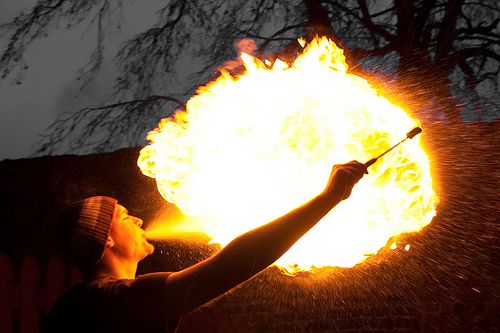New Year’s Art Resolutions: Ten 2012 Shows You Can’t Let Yourself Miss

If you’re like most people, you’ve already broken your New Year’s resolutions. No worries. Here’s a different promise to yourself that should be easier, more enjoyable, and more educational to keep—ten 2012 art exhibitions you can’t let yourself miss. As always, this is a very subjective, personal list and is limited to shows in the US and UK, so there’s a whole world’s worth of new opportunities to see and learn I’m overlooking. (Feel free to add your own can’t miss shows in the comments.) So, with all that in mind, here are the shows (listed in chronological order of openings) I’ve circled on my calendar so far:
David Hockney RA: A Bigger Picture(January 21–April 9 at the Royal Academy of Arts, London): The first major exhibition of new landscape works by David Hockney, perhaps the greatest living canonical artist. Fifty years of work by Hockney ranges from oil paintings to iPad and iPhone drawings and even never-before-seen new films by the artist produced using 18 cameras at once.
Van Gogh Up Close (February 1–May 6 at the Philadelphia Museum of Art): “I…am always obliged to go and gaze at a blade of grass, a pine-tree branch, an ear of wheat, to calm myself,” Vincent Van Gogh wrote in a letter to his sister a year before his death. This exhibition shows how Van Gogh took solace in the minutiae of life when his troubles seemed most immense. Limited to the time from when when van Gogh left Antwerp for Paris in 1886 until his death in Auvers in 1890, this show brings together still lifes and other intimate works to create a big-name blockbuster out of tiny, but telling, detail.
Lucian Freud Portraits(February 9–May 27 at the National Portrait Gallery, London): A fitting farewell to the late Lucian Freud featuring over 100 portraits of the master’s lovers, friends, and family, some of which have never been seen by the public before, including Freud’s last painting, Portrait of the Hound.
Rembrandt and Degas: Portrait of the Artist as a Young Man(February 23–May 20 at The Metropolitan Museum of Art): Like so many others, when Edgar Degas started out as an artist and painted his first self-portraits, he found inspiration in Rembrandt. This exhibition puts youthful self-portraits by Degas and Rembrandt side by side for the first time to explore that influence.
John Chamberlain: Choices(February 24–May 13 at The Guggenheim Museum, New York City): Sadly, sculptor John Chamberlain passed away just months before this massive retrospective of his work. Nearly 100 works show how Chamberlain brought the Abstract Expressionist aesthetic to sculpture in the form of automobile parts, iron rods, metal foil, and other trash turned into artistic treasure.
Cindy Sherman (February 26–June 11, 2012 at the MoMA): Cindy Sherman’s art since the mid-1970s gets the major retrospective treatment with more than 180 photographs, including the revolutionary Untitled Film Stills of the late 1970s in which Sherman recast herself in stereotypical female roles from 1950s and 1960s movies.
Keith Haring: 1978–1982 (March 16–July 8 at the Brooklyn Museum): An exciting look at the early years of Keith Haring’s career when he literally put his art out on the streets. In addition to works on paper and videos, sketchbooks, journals, posters, subway drawings, and documentary photographs tell the tale of a great beginning that ended far too soon.
Damien Hirst (April 4–September 9 at Tate Modern, London): The diamond skull known as For the Love of God, thepreserved shark known as The Physical Impossibility of Death in the Mind of Someone Living, the infamous spot paintings known as the end of civilization, and so much more in a retrospective of Damien Hirst, known (to some) as the biggest fraud in the art world. Fab or fraud? You decide.
Gauguin, Cézanne, Matisse: Visions of Arcadia(June 20–September 3 at the Philadelphia Museum of Art): Riffing on the theme of arcadia—paradise on Earth—the PMA brings together a triumvirate of heavy hitters: Paul Gauguin. Where Do We Come From? What Are We? Where Are We Going? (shown above), Paul Cézanne’s The Large Bathers (1906), and Henri Matisse’s Bathers by a River (1909-17). Supporting works by Nicolas Poussin, Pablo Picasso, Ernst Ludwig Kirchner, Paul Signac, and others give background and depth to an interesting new take on an old theme.
Turner Monet Twombly (June 22–October 28 at Tate Liverpool): The recently deceased Cy Twombly finds his work put side by side with that of J.M.W. Turner and Claude Monet in an examination of style, subject, and motivation that spans two centuries.
[Image:Paul Gauguin. Where Do We Come From? What Are We? Where Are We Going? (detail). 1897-1898. Museum of the Fine Arts, Boston, MA. Image source:Wikipedia.]





